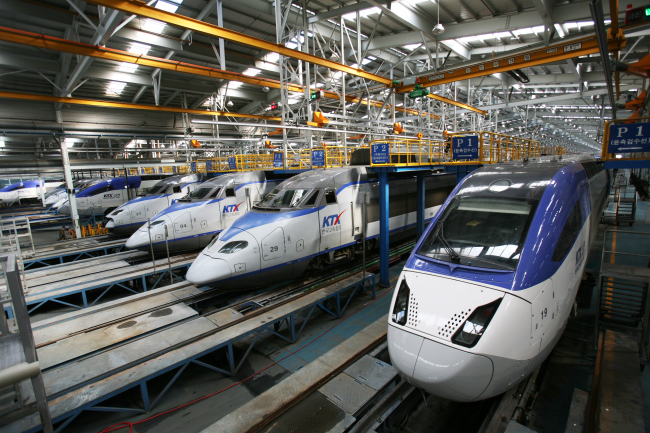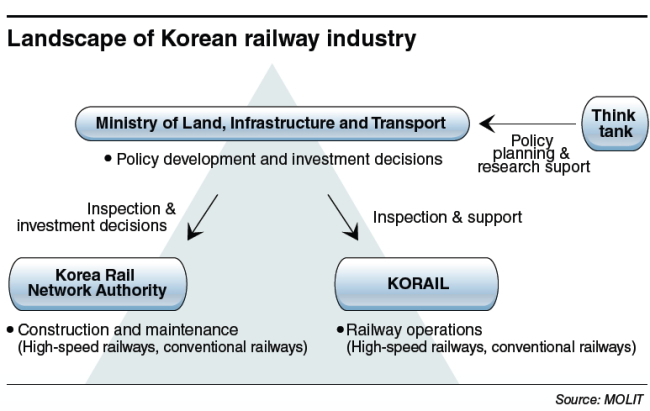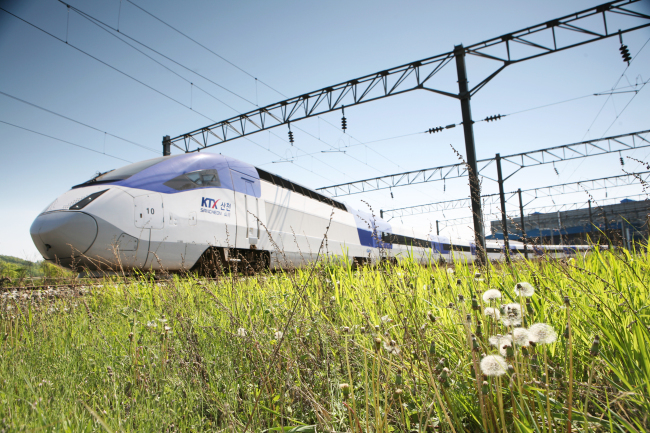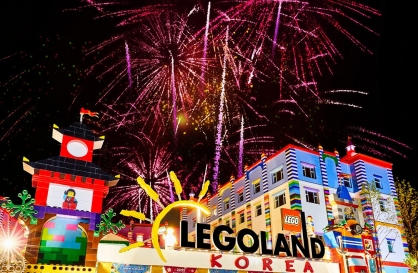[Power Korea] Korea seeks to reform railway system for sustainable growth
By Seo Jee-yeonPublished : July 1, 2013 - 20:24
The Korea Herald is publishing a series of articles on infrastructure as part of its second installment of Power Korea. Korea’s success story is a 60-year-old tale written by not one, but many who worked to build one of the world’s most powerful nations from the ashes of war. This series features the development and global competitiveness of Korea’s infrastructure. The special articles were made in cooperation with the Ministry of Land, Infrastructure and Transport. This is the 5th part of the infrastructure series. ― Ed.
The policy debate concerning reform of the railway transport system has been rekindled in Korea as the Ministry of Land, Infrastructure and Transport announced a plan to improve the financially faltering railway industry last Wednesday.
The highlights of the plan are to split state-run railway operator Korea Railroad Corp., better known as KORAIL, into several subsidiaries by business and to set up a company to run a new high-speed railway as part of efforts to bring competition into the industry for sustainable growth.
Korea has built a globally competitive railway transport system with the government-driven, continued facility investment in line with the nation’s economic development policy since the 1960s.
For now, the nation’s railway network, composed of high-speed railways, regular railways and metropolitan (or urban) railways, extends 4,207.6 km and offers access to almost every city in the nation. The high-speed and urban networks have fully completed double tracks and electrification.
The policy debate concerning reform of the railway transport system has been rekindled in Korea as the Ministry of Land, Infrastructure and Transport announced a plan to improve the financially faltering railway industry last Wednesday.
The highlights of the plan are to split state-run railway operator Korea Railroad Corp., better known as KORAIL, into several subsidiaries by business and to set up a company to run a new high-speed railway as part of efforts to bring competition into the industry for sustainable growth.
Korea has built a globally competitive railway transport system with the government-driven, continued facility investment in line with the nation’s economic development policy since the 1960s.
For now, the nation’s railway network, composed of high-speed railways, regular railways and metropolitan (or urban) railways, extends 4,207.6 km and offers access to almost every city in the nation. The high-speed and urban networks have fully completed double tracks and electrification.


Despite these achievements, the government-led investment and inefficient management put KORAIL, the nation’s railway operator (metropolitan railroad operation excluded), under mounting debt. KORAIL’s overall debt reached 11.6 trillion won ($10 billion) as of the end of last year with the company losing between 400 billion won and 500 billion won annually, according to ministry data.
To revive KORAIL, the ministry decided to split the company into several subsidiaries. KORAIL itself will continue to operate its existing train services to and from Seoul and southeastern Busan and southwestern Yeosu, but will act more as a holding company following the establishment by 2017 of wholly owned subsidiaries that will handle cargo services and train repair and maintenance services.
In addition, the ministry will set up a new subsidiary that will handle the operation of a new KTX express train departing from Suseo in southeastern Seoul, with construction completed in 2015.
When it comes to reform of the industry, market watchers are paying more attention to the new railway operator’s establishment plan as the ministry put an upper limit on KORAIL’s investment in the new entity by 30 percent. The ministry said it would allow only state-run funds or organizations to have the remaining 70 percent of shareholdings in a bid to ease the concerns of KORAIL’s union.
The union opposed the reform plan, claiming that the government will eventually seek to sell part of its 70 percent stake of the new railroad operator to the private sector to bring competition into the industry.
It remains to be seen how fast and what kind of change will be brought into the railway industry where three players ― the Ministry of Land, Infrastructure and Transport, KORAIL and Korea Rail Network Authority ― have been dominant. Traditionally, the ministry has been responsible for the development of railway policies and investment planning. The state-run Korea Rail Network Authority carries out railway construction and maintenance, while KORAIL undertakes operations of the railway network (except the metropolitan railways).
Advancing high-speed railway technologies
As the nation’s train transport infrastructure matured in the 1980s, the government shifted its train transport policy to focus on innovative train technology development. A plan for high-speed railway construction was included in the fifth five-year socio-economic development plan for 1982 to 1986. Under the plan, the construction project to build the Gyeongbu high-speed railway linking Seoul to Busan began in 1992.
The first high-speed railway was constructed in December 1999, after seven years of construction. The opening of the high-speed railway made Korea the fifth nation to operate high-speed trains after Japan, France, Germany and Spain.
High-speed railway projects contributed to developing technological expertise in the sector, which had a great overall impact on the fields of science, technology and industries.
As part of the Gyeongbu high-speed railway construction project, the government signed the core material and equipment supply agreement with Korea TGV Consortium. Based on this contract, Korea received French TGV vehicles, railway tracks and train control technologies from the contractor, and turned them into the foundation for the construction of future high-speed railways.

In addition, the Korea Railway Research Institute, Rotem and other private companies initiated the Korean high-speed railway technology development project in 1996 to develop the KTX-Sancheon train with a top-speed of 350 km per hour.
The test-run of the first KTX based on home-grown technology on Dec. 16, 2004, recorded a maximum speed of 352.4 km per hour and the relevant technologies were upgraded through 200,000 km worth of test-drives until 2007.
The high-speed vehicles developed in Korea are Hanbit200, ITX-Cheongchun, KTX-Sancheon and HEMU-430. All vehicles except for the HEMU-430 have been employed for commercial operation.
Armed with home-grown high-speed train technologies, the Korea Rail Network Authority is seeking to head overseas railway markets, including China, Southeast Asia and the Middle East.
By Seo Jee-yeon (jyseo@heraldcorp.com)












![[Weekender] How DDP emerged as an icon of Seoul](http://res.heraldm.com/phpwas/restmb_idxmake.php?idx=644&simg=/content/image/2024/04/25/20240425050915_0.jpg&u=)






